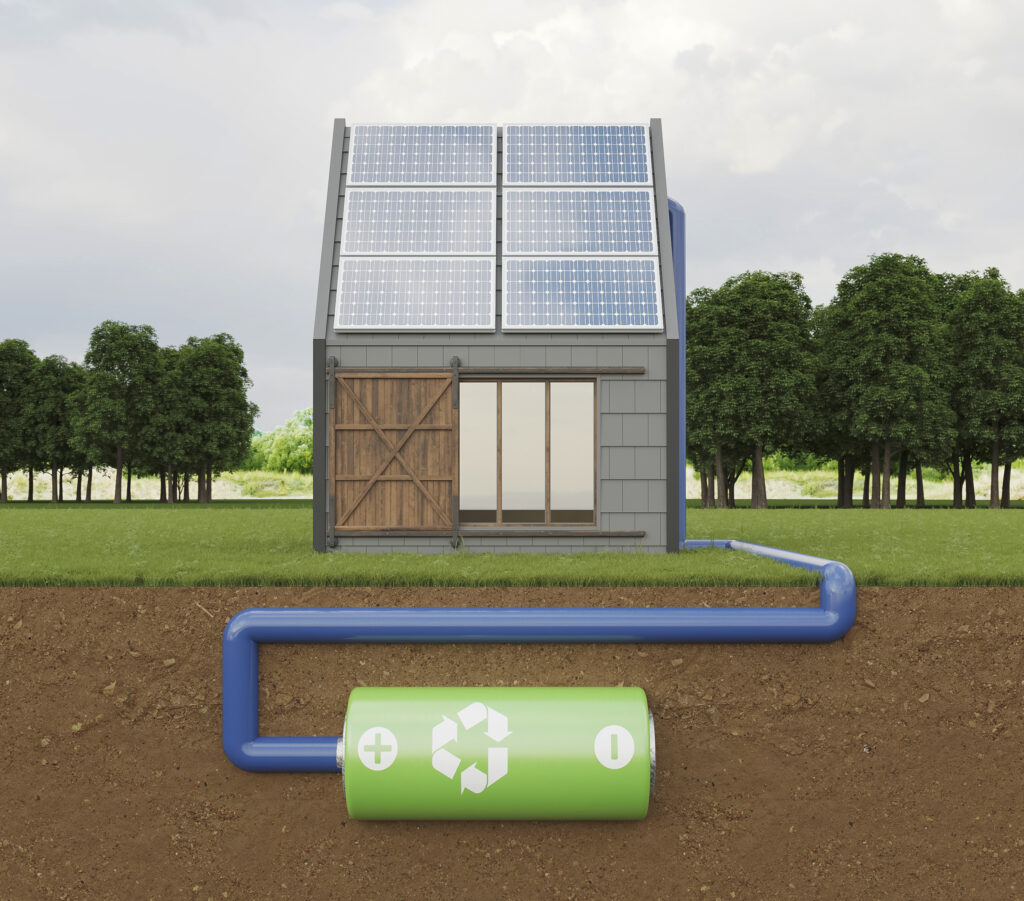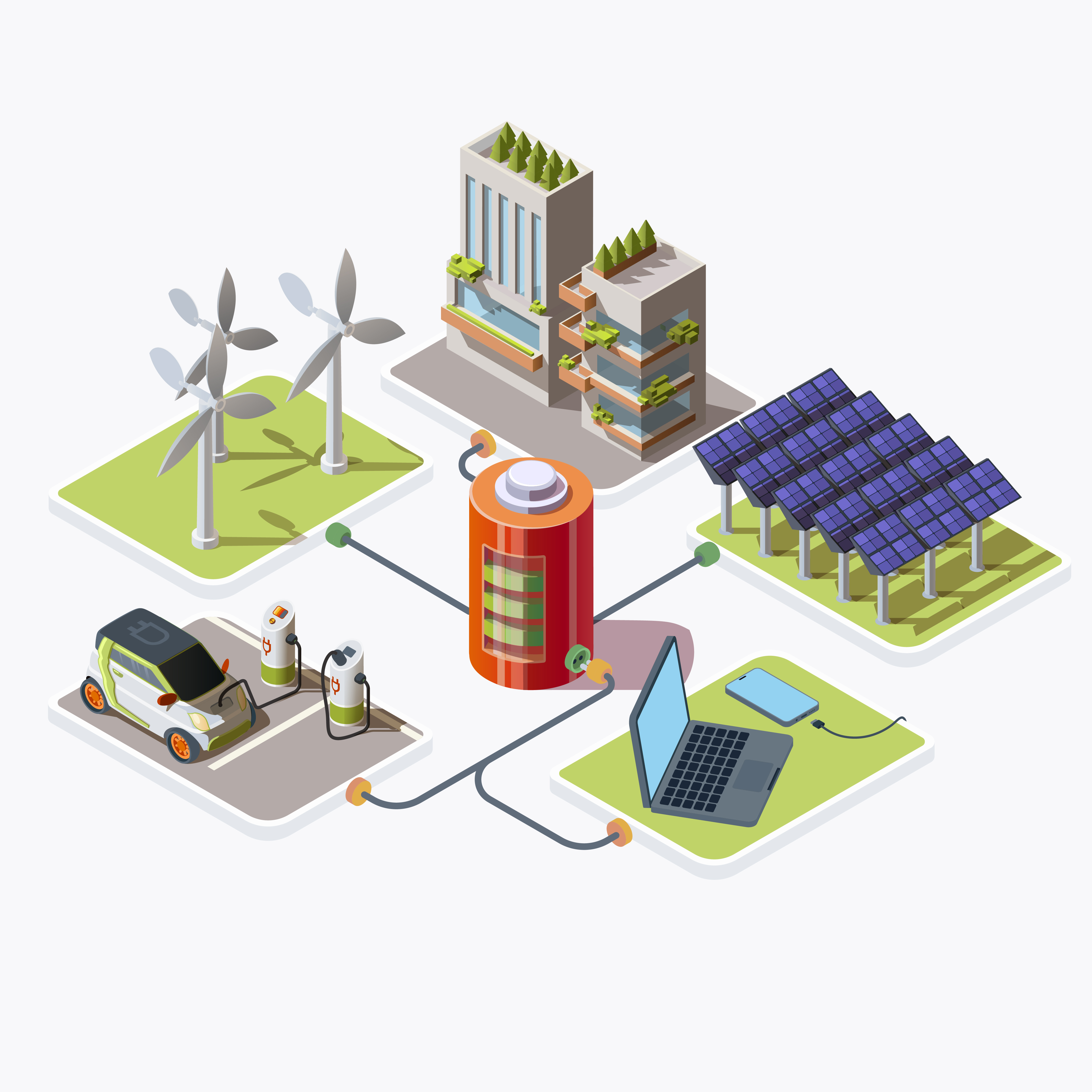Table of Contents
ToggleIntroduction
Energy storage plays a pivotal role in enabling the widespread adoption of renewable energy sources such as solar and wind. Traditional battery technologies have made significant strides in improving energy density, lifespan, and cost-effectiveness. However, there are limitations to battery storage, including issues related to scalability, resource availability, and environmental impact. To overcome these challenges and unlock the full potential of renewable energy, researchers and engineers are exploring a diverse range of innovative storage solutions.
Thermal Energy Storage Solutions
Thermal energy storage (TES) systems utilize heat as a form of energy storage, offering a flexible and efficient means of storing and releasing energy. These systems can store excess heat generated from renewable sources such as solar thermal collectors or geothermal plants, allowing for on-demand power generation even when sunlight or wind is unavailable. TES technologies include sensible heat storage, latent heat storage, and thermochemical storage, each offering unique advantages in terms of efficiency, scalability, and cost-effectiveness.
Pumped hydro energy storage (PHES) is one of the oldest and most established forms of grid-scale energy storage. It involves using surplus electricity to pump water from a lower reservoir to a higher reservoir during periods of low demand, then releasing the water to generate hydroelectric power during peak demand periods. PHES systems are renowned for their high efficiency, long lifespan, and large storage capacities, making them ideal for balancing fluctuations in renewable energy generation and demand.
Compressed Air Energy Storage (CAES) Systems
Compressed air energy storage (CAES) systems store energy by compressing air into underground caverns or aboveground tanks when electricity is abundant, then releasing the compressed air to drive turbines and generate electricity when needed. CAES offers significant cost and scalability advantages over battery storage, particularly for large-scale applications. Advanced adiabatic and diabatic CAES technologies are being developed to improve efficiency and address environmental concerns associated with conventional CAES systems.
Flywheel energy storage systems store energy in the form of rotational kinetic energy, spinning a rotor at high speeds to store energy and releasing it as electricity when needed. Flywheels offer rapid response times, high power density, and long cycle life, making them well-suited for applications requiring short-duration energy storage and frequency regulation. Advanced composite materials and magnetic bearings are enhancing the performance and reliability of flywheel systems for grid-scale and transportation applications.
Supercapacitors and Ultracapacitors
Supercapacitors, also known as ultracapacitors or electrochemical capacitors, store energy through the electrostatic attraction of ions at the electrode-electrolyte interface. Unlike batteries, which store energy through chemical reactions, supercapacitors store energy electrostatically, allowing for rapid charge and discharge cycles with minimal degradation. Supercapacitors are valued for their high power density, fast charging capabilities, and long cycle life, making them ideal for applications requiring high-power bursts or frequent cycling.
Molten salt energy storage systems utilize the heat capacity of molten salts to store and release thermal energy for power generation. These systems typically consist of a storage tank filled with molten salt, which is heated using concentrated solar energy or waste heat from industrial processes. Molten salt storage offers high temperature stability, thermal efficiency, and long-term storage capabilities, making it suitable for concentrating solar power (CSP) plants and other renewable energy applications requiring dispatchable power generation.
Hydrogen Energy Storage Technologies
Hydrogen has emerged as a promising energy carrier for storing and transporting renewable energy, offering high energy density, zero emissions, and versatility across various sectors. Hydrogen can be produced through electrolysis of water using renewable electricity, stored in tanks or underground caverns, and converted back to electricity through fuel cells or combustion when needed. Hydrogen storage technologies include compressed hydrogen gas, liquid hydrogen, and solid-state hydrogen storage materials, each with unique advantages and challenges.
Gravity-based energy storage systems utilize the gravitational potential energy of elevated masses or weights to store and release energy. These systems typically involve lifting heavy objects, such as concrete blocks or trains, to an elevated position using surplus electricity, then lowering them to generate electricity when needed. Gravity-based storage offers low cost, long-duration storage, and minimal environmental impact compared to other storage technologies, making it suitable for large-scale grid applications and remote off-grid settings.
Redox Flow Batteries (RFBs)
Redox flow batteries (RFBs) are a type of rechargeable battery that store energy in liquid electrolyte solutions contained in external tanks. During charging and discharging, electrolyte solutions containing different redox-active species are pumped through electrochemical cells, where chemical reactions occur to store or release energy. RFBs offer scalability, modularity, and long cycle life, making them well-suited for stationary energy storage applications, grid integration, and renewable energy smoothing.
Liquid air energy storage (LAES) systems store energy by liquefying air using surplus electricity, then expanding the liquid air to drive turbines and generate electricity when needed. LAES offers large-scale, long-duration storage capabilities with rapid response times and high efficiency. By utilizing readily available and non-toxic materials, LAES systems can be deployed at a fraction of the cost of traditional battery storage, making them an attractive option for grid-scale energy storage and renewable energy integration.
Kinetic Energy Storage Systems
Kinetic energy storage systems store energy in the form of mechanical motion, typically using a spinning rotor or flywheel to store and release energy. During periods of excess energy generation, the rotor is accelerated to high speeds, storing energy as rotational kinetic energy. When electricity is needed, the rotor is connected to a generator to convert the kinetic energy back into electricity. Kinetic energy storage offers high power density, fast response times, and long cycle life, making it suitable for applications requiring rapid energy delivery or frequency regulation.
Electrochemical capacitors (ECs), also known as electrochemical double-layer capacitors (EDLCs) or supercapacitors, store energy through the electrostatic adsorption of ions at the electrode-electrolyte interface. ECs offer high power density, fast charging and discharging rates, and long cycle life, making them ideal for applications requiring rapid energy delivery or high-power bursts. Advanced materials and electrode designs are enhancing the energy density and performance of ECs for grid-scale energy storage, transportation, and portable electronics.
Adiabatic Liquid Metal Batteries (ALMBs)
Adiabatic liquid metal batteries (ALMBs) are a type of rechargeable battery that store energy using molten metal electrodes separated by a molten salt electrolyte. ALMBs operate adiabatically, meaning that they retain the heat generated during charging and discharging, improving overall efficiency and reducing environmental impact. ALMBs offer high energy density, long cycle life, and rapid response times, making them well-suited for grid-scale energy storage, renewable energy integration, and stationary power applications.
Hybrid flywheel-battery energy storage systems combine flywheel and battery technologies to provide high-power and high-energy storage capabilities. By integrating flywheels for rapid energy delivery and batteries for long-duration storage, hybrid systems can optimize energy density, response times, and cycle life for various applications. Hybrid flywheel-battery energy storage systems are particularly well-suited for grid stabilization, frequency regulation, and backup power applications requiring fast response times and high reliability.
Lithium-Sulfur Batteries for Energy Storage
Lithium-sulfur batteries (Li-S batteries) are a type of rechargeable battery that store energy using lithium metal and sulfur electrodes. Li-S batteries offer high energy density, low cost, and environmental sustainability compared to traditional lithium-ion batteries, making them well-suited for grid-scale energy storage, electric vehicles, and portable electronics. By utilizing abundant and low-cost materials, such as sulfur and lithium, Li-S batteries have the potential to provide cost-effective and scalable energy storage solutions for renewable energy systems.
Underground pumped hydro storage (UPHS) systems utilize underground reservoirs or caverns to store and release water for energy storage. UPHS offers significant cost and environmental advantages compared to conventional pumped hydro systems, as it eliminates the need for large surface reservoirs and minimizes land use and environmental impact. By utilizing existing underground infrastructure, UPHS systems can be deployed in urban areas and remote locations, providing scalable and long-duration energy storage solutions for renewable energy integration.
Conclusion
Innovations in renewable energy storage technologies are driving the transition to a more sustainable and resilient energy future. From thermal storage systems to hydrogen solutions, flow batteries, and beyond, researchers and engineers are developing a diverse array of storage technologies to complement and enhance existing capabilities. By harnessing the power of innovation and collaboration, we can overcome the challenges of energy storage and accelerate the adoption of renewable energy sources worldwide. Together, we can build a cleaner, greener, and more sustainable energy ecosystem for generations to come.
FAQs
What are some examples of renewable energy storage technologies beyond batteries?
Renewable energy storage goes beyond traditional batteries. Examples include thermal energy storage, pumped hydro energy storage, compressed air energy storage, and hydrogen energy storage systems.
How do thermal energy storage systems work in renewable energy applications?
Thermal energy storage systems store and release energy in the form of heat. They capture excess heat generated from renewable sources like solar or geothermal energy and store it for later use, enabling on-demand power generation even when sunlight or wind is unavailable.
What are the advantages of pumped hydro energy storage compared to batteries?
Pumped hydro energy storage (PHES) offers high efficiency, long lifespan, and large storage capacities. It is well-suited for balancing fluctuations in renewable energy generation and demand, and it provides grid stability without the resource limitations or environmental concerns associated with batteries.
How does compressed air energy storage contribute to renewable energy integration?
Compressed air energy storage (CAES) systems store energy by compressing air into underground caverns or aboveground tanks. They offer significant cost and scalability advantages over batteries, particularly for large-scale applications, and they can efficiently balance fluctuations in renewable energy generation and demand.
What role does hydrogen energy storage play in the renewable energy landscape?
Hydrogen energy storage enables the conversion of surplus renewable electricity into hydrogen gas, which can be stored and later converted back into electricity through fuel cells or combustion. It offers high energy density, zero emissions, and versatility across various sectors, making it a key component of the transition to a sustainable energy future.







